mobile View, to the German Version tap the flag


- Îles Australes
- possession of France
- part of the French possession of French Polynesia
- consisting in: Tubuai Islands (54 sq.mi., 6 820 inh., capital: Mataura) and Bass Islands (16 sq.mi., 820 inh., capital: Ahurei)
- own name: Subdivision administrative des Archipel des Îles Australes
• Flags
• unofficial Flag
• Meaning/Origin of the Flag
• Map
• Numbers and Facts
• History
• Origin of the Country's Name
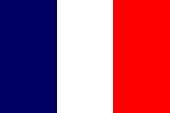
Flag of France,
ratio = 2:3,
Source, by: Corel Draw 4





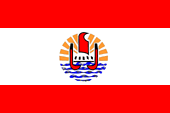
since 1984,
Flag of French Polynesia,
ratio = 2:3,
Source, by: Wikipedia (D)






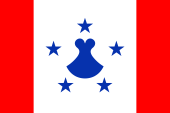
unofficial flag,
Source, by: Wikipedia (D)




The Austral Islands – as a part of French Polynesia – have officially no own flag. It must be hoisted the French tricolor or additionally, the flag of French Polynesia. However, there exists for local purposes an unofficial flag. It shows three vertical stripes in red, white and red (ratio: 1:3:1). In the white field is placed a blue emblem. It consists of five blue five-pointed stars and a "Penu" in the middle. The stars stand for the five municipalities of the archipelago. The "Penu" stands for the entire archipelago. A Penu is a traditional pestle made of volcanic rock. The flag - with its two red stripes remembers, that the Austral Islands came in 1819 under the sovereignty of Tahiti, and that they are today a part of French Polynesia. The colour red is defined as Pantone 185c, and the colour blue as Pantone 286c.
Source: Wikipedia (D), FOTW

Location:
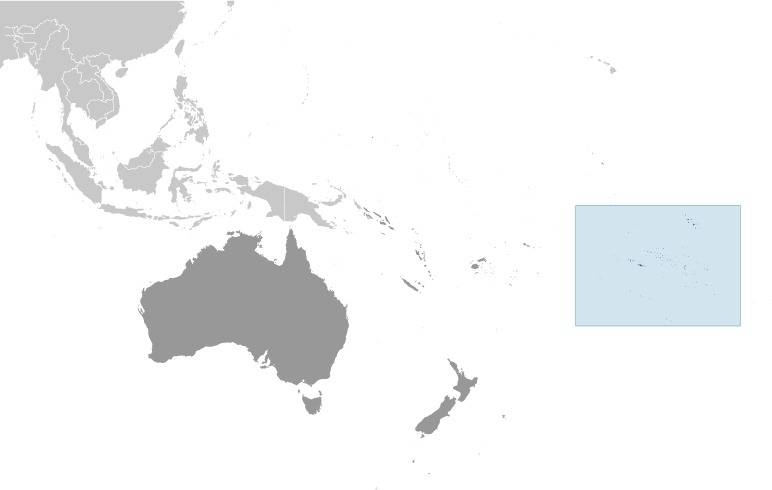
Source: CIA World Factbook
Map of French Polynesia:
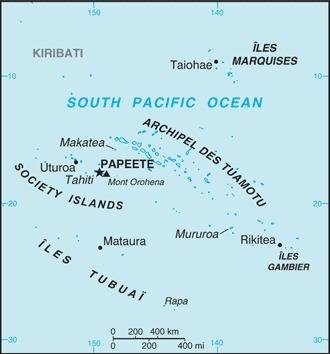
Source: CIA World Factbook
Subdivisions of French Polynesia:
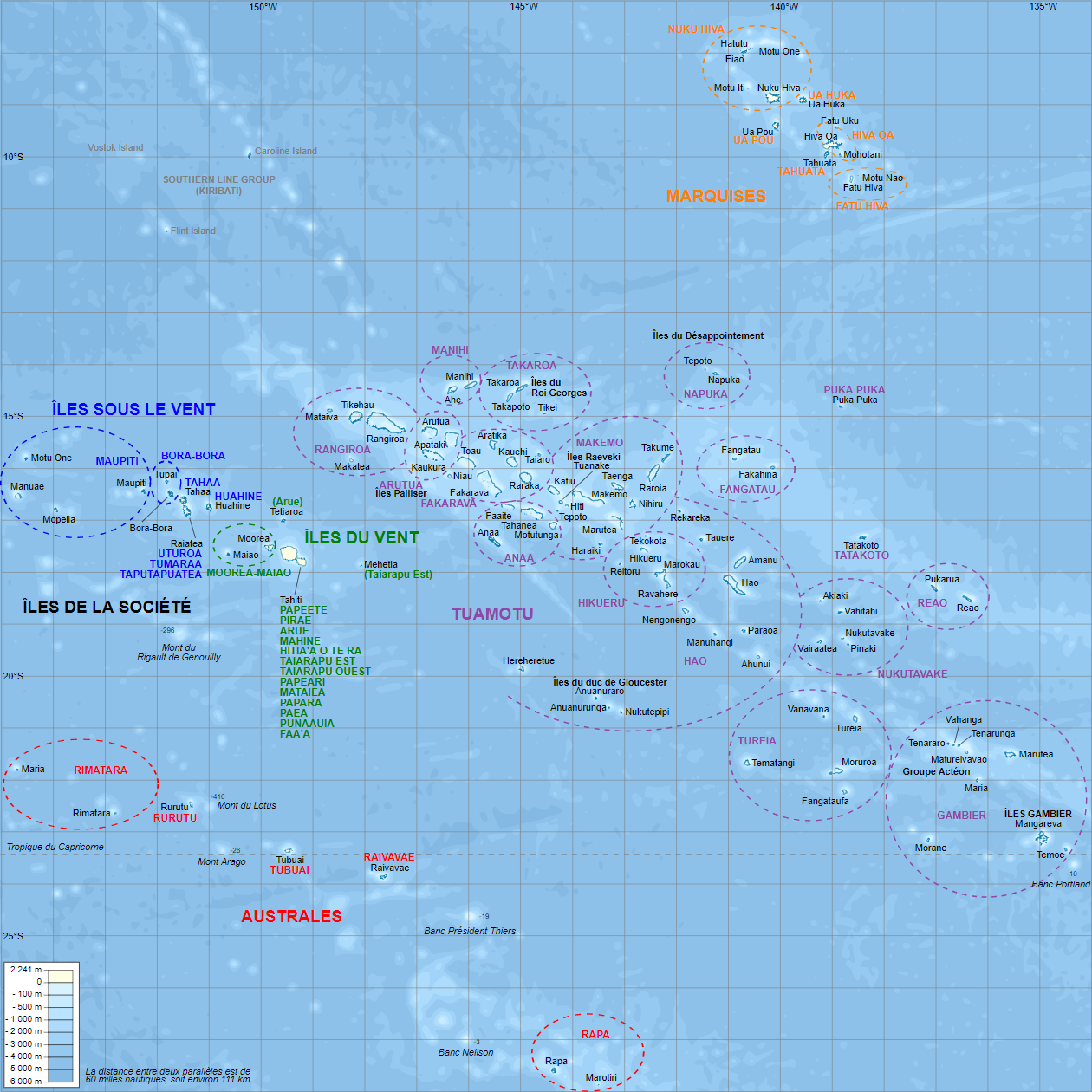
Landkarte/map, Source: By L. Claudel (Sardon - fr:Sardon)
[GFDL or CC BY-SA 3.0], via Wikimedia Commons,
click to enlarge

Area: 54 square miles
Inhabitants: 6.820 (2012)
Density of Population: 126 inh./sq.mi.
Main place: Mataura (on Tubuai)
official Language: French
other Languages: Austral (Polynesian dialect)
Currency: CFP-Franc (CFPF) = 100 Centimes,
CFPF = "Franc des Colonies Françaises du Pacifique"
Time Zone: GMT – 10 h
Source: Wikipedia (D)

ca. 1200 A.D. · beginning polynesian settlement
1769 · the British navigator James Cook discovers the islands and visits Rurutu
1775 · the Spanish seafarer Thomás de Gayangos discovers Raivavae Island
1777 · the British navigator James Cook discovers the Tubuai Island
1789 · the Bounty mutineers live for three months on Tubuai Island
1791 · the British Commander George Vancouver discovers Rapa Iti Island
1800 · the British navigator George Bass discovers Marotiri Island
1811 · the timber-merchant Samuel Pinder Henry discovers Rimatara Island
1824 · the US-american whaler George Washington Gardner discovers the uninhabited Maria Atoll
1819 · King Pomaré II. of Tahiti is crowned and visits the Austral Islands - the Pomaré dynasty had – with British support – already brought the Society Islands and the Low Islands under their control, the Austral Islands (except Rurutu, Rimatara and Maria) become subordinated under a Tahitian governor
1842 · France declares Tahiti to a French protectorate
1874 · France declares Tubuai Island to a French protectorate
1876 · France declares Raivavae Island to a French protectorate
1880 · France annexes Tahiti, with Tahiti are the Austral Islands become annexed to (except Rurutu, Rimatara and Maria) and become a French colony
27.03.1889 · France declares (after consultations with the United Kingdom) the Kingdom of Rurutu to French a protectorate
29.03.1889 · France declares (after consultations with the United Kingdom) the Kingdom of Rimatara (incl. Maria) to a French protectorate
1900 · France annexes Rurutu and Rimatara, the islands (incl. Maria) become a French colony
1903 · establishing of a unified French colonial administration for the Society Islands, Marquesas Islands, Tuamotu Islands, Gambier Islands and Austral Islands under the name "French Polynesia"
Source:
Wikipedia (D)

The name of the islands as "Austral Islands" indicates their geographical location as located in the southern islands. They are actually the southernmost islands of Polynesia. However, the name of the island group is rarely printed. more One concentrates simply ignoring the Tubuai Islands (Western Austral Islands), the insignificant Bass Islands (the eastern Austral Islands).
Source:
Volker Preuß


![]()












